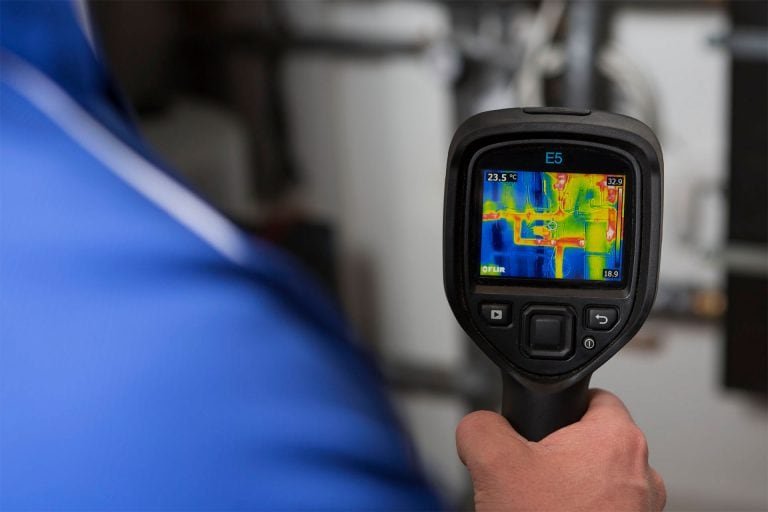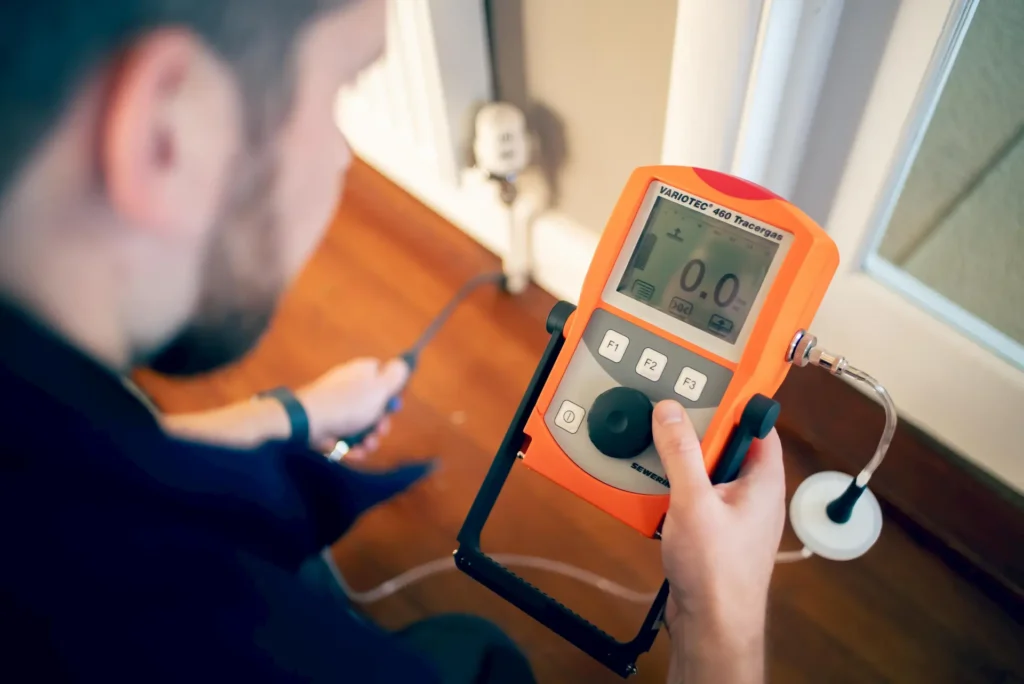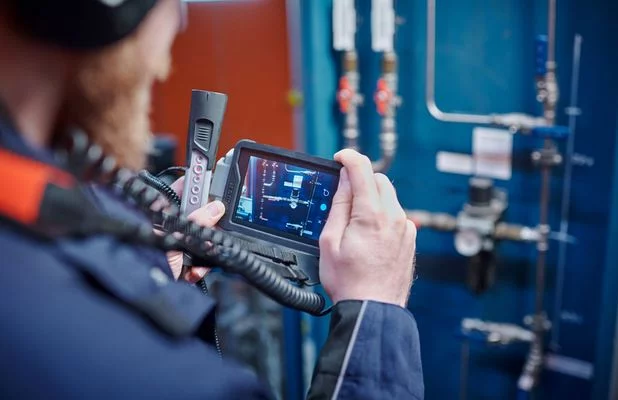In the idyllic city of Alhambra, where preservation of historic structures is paramount, the quest for non-invasive leak detection methods becomes imperative. Traditional methods often involve invasive procedures that can compromise the integrity of architectural treasures. This exploration The Pro Plumbing will delves into innovative, non-destructive techniques designed to identify leaks without causing structural harm. By embracing cutting-edge technologies, Alhambra aims to safeguard its rich cultural heritage while addressing essential maintenance needs. This guide navigates through the non-invasive landscape of leak detection methods, offering a harmonious blend of technological advancements and preservation principles tailored for the distinctive setting of Alhambra.
Preservation Focus:
In Alhambra, a city cherishing its historical structures, the preservation focus is paramount in every facet of maintenance, including leak detection. Traditional invasive methods often involve drilling or other disruptive procedures that pose a threat to the architectural integrity of cherished buildings. Consequently, the preservation of Alhambra’s cultural heritage necessitates a dedicated exploration of non-invasive leak detection methods. By adopting these innovative technologies, the city can address leaks and potential damages without compromising the structural essence of its historic structures. This preservation focus underscores a commitment to maintaining Alhambra’s unique character while ensuring the longevity of its architectural treasures.
Acoustic Leak Detection:
Acoustic leak detection is an advanced method for identifying water leaks by analyzing distinctive sound frequencies associated with escaping water. This non-invasive technique uses sensitive microphones strategically placed near suspected leaks, distinguishing unique acoustic signals from background noise. Specialized equipment discerns imperceptible sounds, allowing experts to precisely locate leaks without excavation. Valuable in urban areas like Alhambra, it minimizes disruption and preserves infrastructure integrity, contributing to effective water resource management. Additionally, this technique proves instrumental in finding hidden leaks in commercial buildings.

Thermal Imaging:
Thermal imaging serves as a highly effective and non-invasive method for leak detection, particularly in Alhambra’s urban infrastructure. This innovative technique relies on infrared cameras to capture variations in surface temperatures associated with water leaks. When water escapes from a compromised pipe or structure, it often creates subtle temperature changes that are imperceptible to the naked eye but are readily detectable through thermal imaging. Cold spots or areas exhibiting unusual thermal patterns can indicate the presence of hidden leaks within walls, ceilings, or underground pipelines. The non-destructive nature of thermal imaging makes it a valuable tool for pinpointing potential problem areas without the need for invasive excavation. This method is especially advantageous in urban environments where preserving existing infrastructure is crucial. By swiftly identifying and addressing leaks through thermal imaging, Alhambra can efficiently manage water resources, reduce potential damages, and maintain the integrity of its water supply systems.
Ground Penetrating Radar (GPR):
- Principle of Operation:
- Ground Penetrating Radar (GPR) operates by sending short pulses of electromagnetic waves into the ground.
- These waves penetrate various materials, and upon encountering subsurface features or anomalies, they reflect back to the surface.
- Detection of Underground Structures:
- GPR is particularly useful for detecting subsurface structures, including pipes and utilities.
- It provides a detailed image of the subsurface, helping identify the location and depth of potential leaks.
- Non-Invasive Nature:
- GPR is a non-invasive technique that does not require physical contact with the ground.
- It eliminates the need for excavation, minimizing disruption to the surrounding environment.
- Identification of Anomalies:
- GPR can detect anomalies in the subsurface, such as voids, changes in material composition, or the presence of water.
- These anomalies can indicate potential leaks or weaknesses in the infrastructure.
- Versatility in Applications:
- GPR can be applied to a variety of surfaces, including soil, concrete, asphalt, and more.
- It is suitable for both indoor and outdoor use, making it versatile in leak detection across different environments.
- Depth and Resolution:
- GPR provides information about the depth of subsurface features, allowing for a comprehensive understanding of the underground environment.
- The resolution of GPR images is often high, enabling precise localization of potential leak sources.
- Real-Time Data Acquisition:
- GPR systems typically provide real-time data, allowing operators to interpret and analyze the results on-site.
- This facilitates immediate decision-making and action in response to detected anomalies.
- Cost-Effective Solution:
- While GPR equipment may require an initial investment, the overall cost-effectiveness stems from its ability to swiftly and accurately locate subsurface issues without the need for extensive excavation.
- Safety Considerations:
- GPR is a safe and non-destructive method that poses minimal risks to operators and the environment.
- It is suitable for deployment in areas where safety is a primary concern.
- Integration with GIS (Geographic Information System):
- GPR data can be integrated with GIS, enhancing the mapping and visualization of underground features.
- This integration provides a comprehensive overview of the subsurface infrastructure, aiding in leak detection and maintenance planning.
Ground Penetrating Radar proves to be an invaluable tool in Alhambra’s leak detection efforts, offering a non-invasive, versatile, and detailed approach to subsurface imaging.
Tracer Gas Leak Detection:
Tracer gas leak detection is a highly effective and non-invasive method employed to identify and pinpoint leaks in various systems, including pipelines and industrial facilities. This technique involves introducing a specific and harmless gas, often helium or hydrogen, into the system being examined. As the tracer gas escapes from the compromised area, sensitive detectors or sniffers are used to trace and locate the gas concentration, revealing the precise location of the leak. The non-toxic nature of the tracer gas makes it a safe choice for such applications. Tracer gas leak detection is particularly advantageous in situations where leaks may be challenging to identify visually or where the system under scrutiny is complex and interconnected. This method offers a high level of accuracy and efficiency, contributing to the swift detection and mitigation of leaks without causing disruption to the surrounding environment or infrastructure. In Alhambra, where the preservation of urban infrastructure is crucial, tracer gas leak detection serves as a valuable tool for maintaining the integrity of water and gas systems, significantly advancing leak detection in underground piping systems.

Moisture Meters:
Moisture meters are indispensable tools in non-invasive leak detection, offering a straightforward and effective means of identifying abnormal levels of moisture in various materials. These devices operate on the principle of measuring the electrical conductivity or capacitance of a material, which correlates with its moisture content. In the context of leak detection, moisture meters prove particularly valuable for identifying water intrusion in building structures. By assessing the moisture levels in walls, ceilings, or floors, these meters can pinpoint areas affected by leaks or water damage without the need for destructive testing. This non-invasive approach is crucial in preserving the integrity of structures, as it allows for targeted interventions to address leaks promptly. Moisture meters are versatile tools applicable to a range of materials, including wood, drywall, and concrete, making them valuable assets in leak detection efforts in diverse environments like Alhambra. Their ability to provide quick and precise readings aids in early leak detection, reducing the potential for extensive damage and facilitating proactive maintenance measures.
Electromagnetic Leak Detection:
Electromagnetic leak detection is a sophisticated method employed for identifying and locating leaks in pipelines and other infrastructure. This non-invasive technique relies on the disruption of electromagnetic fields caused by the presence of water escaping from a compromised system. As water interacts with the surrounding soil or material, it alters the conductivity of the medium, creating detectable changes in the electromagnetic field. Specialized sensors are used to pick up these disruptions, allowing technicians to pinpoint the location of potential leaks with a high degree of accuracy. One of the key advantages of electromagnetic leak detection is its applicability to both metallic and non-metallic pipelines, making it versatile in various infrastructure scenarios. This method offers a non-destructive alternative to traditional leak detection, minimizing the need for excavation and reducing potential damage to the surrounding environment. In urban areas like Alhambra, where minimizing disruption is paramount, electromagnetic leak detection proves to be an invaluable tool for maintaining the integrity of water and utility systems, significantly advancing routine leak detection to prolong the life of plumbing systems.
Pressure Testing:
- Principle of Pressure Testing:
- Pressure testing involves pressurizing a system to evaluate its integrity and identify potential leaks.
- The test is conducted by introducing air, water, or another inert gas into the system and monitoring pressure changes.
- Variants of Pressure Testing:
- Hydrostatic Pressure Testing:
- Involves using water as the test medium.
- Detects leaks by observing water escaping from the system under pressure.
- Pneumatic Pressure Testing:
- Uses air or another gas for pressurization.
- Detects leaks by monitoring pressure drops and audible hissing sounds.
- Hydrostatic Pressure Testing:
- Non-Destructive Nature:
- Pressure testing is a non-destructive method that doesn’t require physical alteration or damage to the system.
- Ideal for assessing the integrity of pipelines, plumbing systems, and other structures without excavation.
- Pressure Drop Analysis:
- Leaks are identified by observing a decrease in pressure over a set period.
- Pressure drop indicates potential leaks, and the rate of drop can help estimate the severity.
- Applicability to Various Systems:
- Suitable for testing a wide range of systems, including water pipelines, gas lines, and industrial pressure vessels.
- Versatile in both residential and industrial applications.
- Safety Considerations:
- Safety measures are crucial during pressure testing to prevent overpressurization and ensure the well-being of operators.
- Adherence to safety standards is essential to minimize risks.
- Real-Time Monitoring:
- Advanced pressure testing systems allow for real-time monitoring and data analysis.
- Enables quick identification of leaks and immediate corrective actions.
- Cost-Effective Maintenance Tool:
- Pressure testing serves as a cost-effective maintenance tool by identifying potential issues before they escalate.
- Reduces the likelihood of major failures and the associated repair costs.
- Regulatory Compliance:
- Pressure testing may be mandated by regulations to ensure the safety and reliability of certain systems.
- Compliance helps maintain standards and ensures public safety.
- Preventive Maintenance:
- Regular pressure testing as part of a preventive maintenance strategy helps extend the lifespan of pipelines and systems.
- Identifying and addressing leaks promptly minimizes the risk of catastrophic failures.
- Integration with Technology:
- Pressure testing data can be integrated with digital monitoring systems for comprehensive analysis.
- Enhances the efficiency of leak detection and overall system maintenance.
Pressure testing is a crucial tool in Alhambra’s infrastructure maintenance, offering a non-destructive means of identifying potential leaks and ensuring the reliability and safety of water and gas systems.

Visual Inspection with Borescopes:
Visual inspection with borescopes is a valuable and non-invasive method employed to examine inaccessible or hard-to-reach areas for potential leaks or structural issues. Borescopes are slender, flexible tubes equipped with a small camera at the end, allowing operators to visually inspect spaces that would otherwise be challenging to access. In leak detection, borescopes prove particularly effective for examining internal components of pipes, conduits, and other infrastructure without the need for extensive dismantling or excavation. The real-time video feed from the borescope enables technicians to identify visible signs of leaks, corrosion, or blockages. This method is especially advantageous for pinpointing issues within walls, beneath floors, or in complex plumbing systems. Visual inspection with borescopes contributes to efficient and targeted maintenance efforts, allowing for timely intervention and preventing potential water damage. In urban environments like Alhambra, where preserving existing structures is crucial, borescopic inspections provide a non-disruptive means of ensuring the integrity of water and utility systems, significantly enhancing leak detection services.
FAQ’s:
What is non invasive leak detection?
Non-invasive leak detection is the identification of leaks in systems or structures without the need for physical damage or disruption, using methods such as acoustic sensors, imaging technologies, or gas tracers.
What is the new technology for leak detection?
Advanced technologies like artificial intelligence-driven algorithms and IoT-enabled sensors are at the forefront of new developments in leak detection, offering real-time monitoring and enhanced precision.
What is the most effective leak detection method?
The effectiveness of leak detection methods depends on the context, but currently, advanced technologies like acoustic sensors, IoT-based systems, and artificial intelligence algorithms are considered highly effective for accurate and swift leak identification.
What instrument is used for leak detection?
Acoustic leak detection devices, such as ground microphones or hydrophones, are commonly used instruments for detecting leaks in various systems.
What is the purpose of water leak detection?
The purpose of water leak detection is to identify and address leaks promptly, minimizing water wastage, preventing structural damage, and ensuring the efficient and sustainable use of water resources.
CONCLUSION:
In conclusion, the exploration of non-invasive leak detection methods in Alhambra reveals a suite of advanced technologies that are pivotal in preserving the integrity of water and utility systems. Techniques such as acoustic leak detection, thermal imaging, ground-penetrating radar, and others provide a non-disruptive means to identify and address leaks swiftly, crucial in urban environments. The adoption of these methods not only minimizes the environmental impact but also enhances the efficiency of maintenance efforts, reducing the potential for water damage and optimizing resource management. As Alhambra continues to prioritize sustainable infrastructure practices, the integration of these cutting-edge technologies in leak detection stands as a testament to the city’s commitment to the responsible and efficient use of its water resources.





